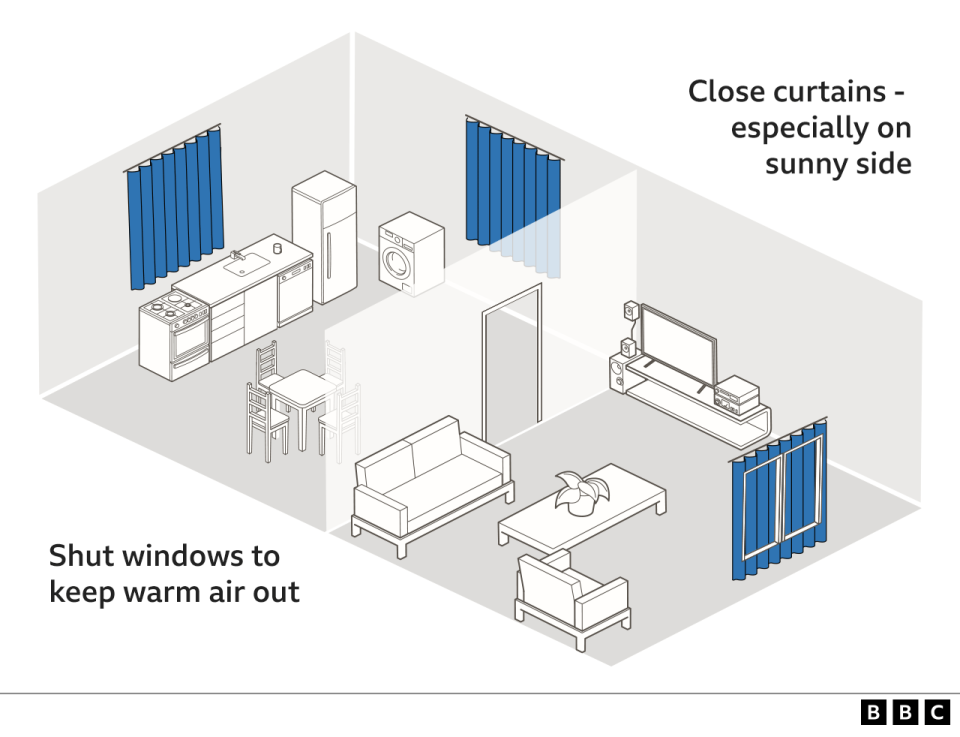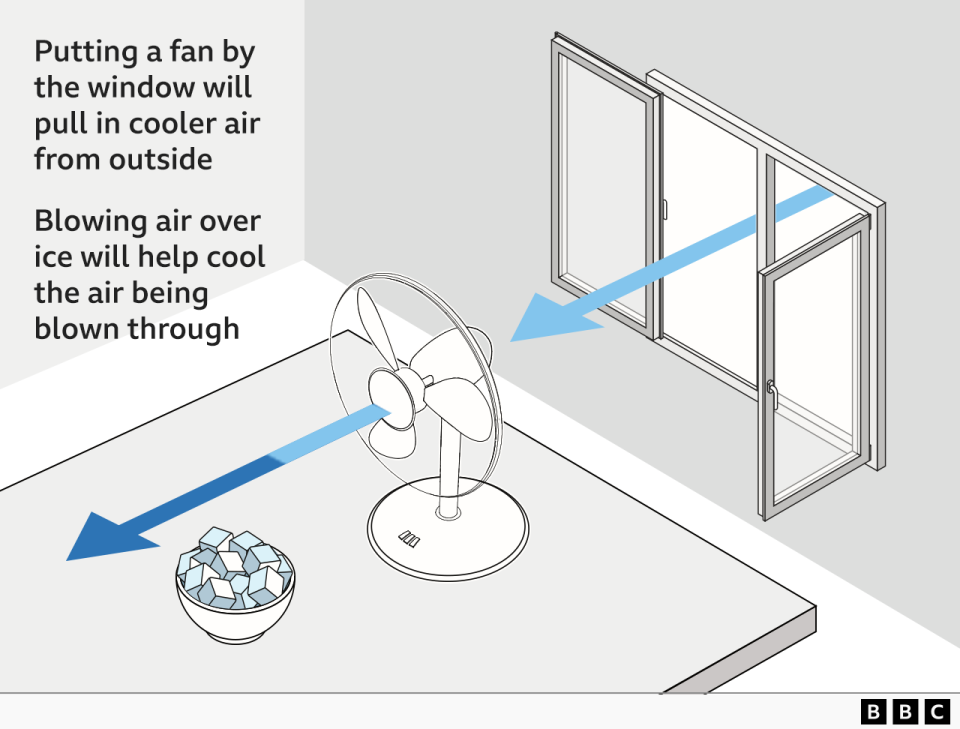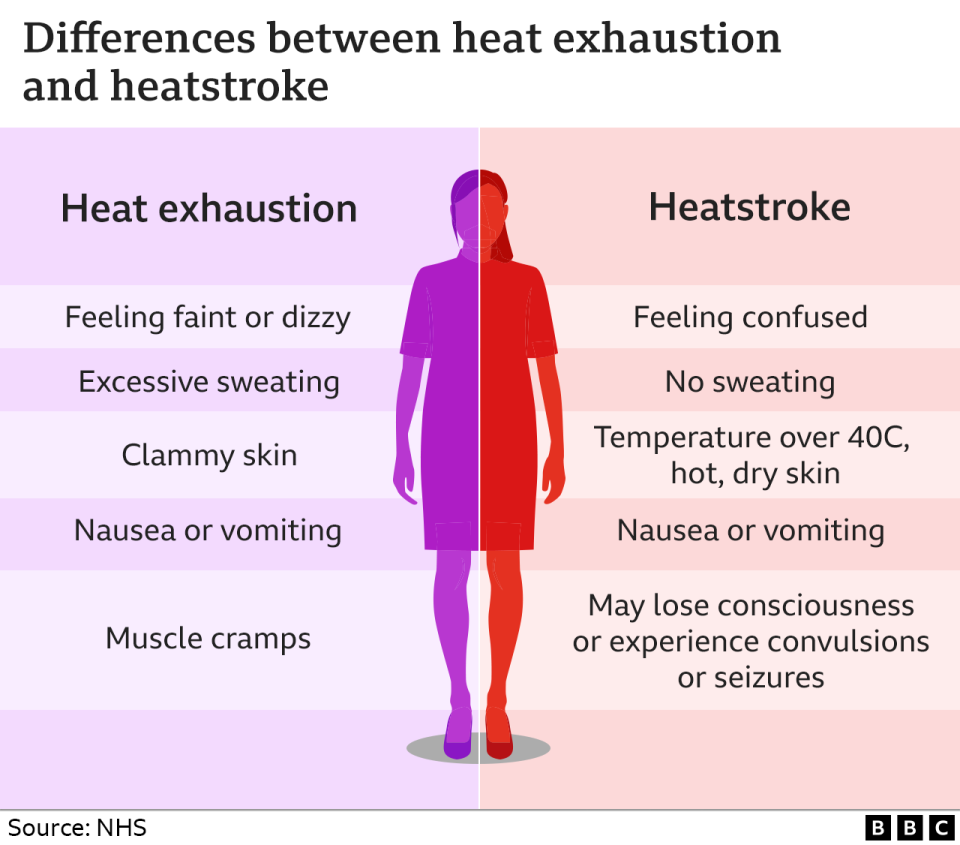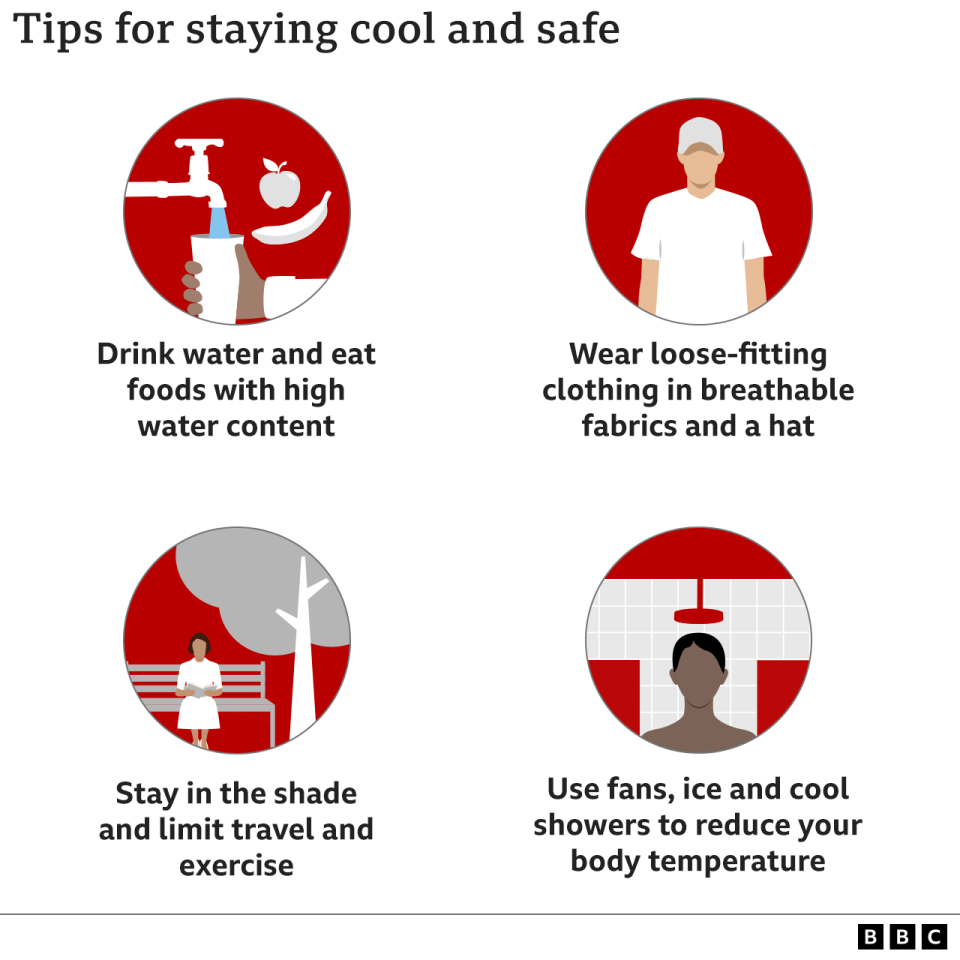How to keep your home cool

As the UK faces rising temperatures, what can we do to help keep our homes cool?
1. Let in cool air and encourage air flow
Open windows on opposite sides of the house to encourage air flow - releasing trapped warm air and allowing in cooler air.

It is important to do this when the air temperature outside is cooler than inside, this tends to be overnight or for a couple of hours in the early morning.
In flats, which may have windows on one side only, open doors and use a fan to encourage airflow.
Do not prop open doors leading to corridors, because they are a fire safety measure.
As the hot air rises from within your home it can often get stuck, and if you have loft vents or windows it is a good idea to open them to release some of the heat.
If you do not, then the hot air can get trapped on the second floor, where you may be trying to sleep. Opening the loft hatch can allow the air to rise further and away from the bedroom.
"If you're able to invest, installing extra insulation in your home will help keep heat out in the summer as well as reduce your energy bills and usage in the winter," says Joanna O'Loan, from the Energy Saving Trust.
2. Keep warmer air out during the day
In the heat of the day it is best to keep your windows shut and blinds/curtains closed - especially on the side of your home where the sun is shining.

Homes in the Mediterranean are typically built to keep out the heat. From clay roof tiles, to white walls. It is also not uncommon to see smaller windows as people endeavour to keep out as much direct sunlight as possible, especially on eastern and western sides of houses.
3. Use a fan to enhance the breeze
Fans are "a relatively cheap and energy efficient way to keep air moving" and can help you stay cool, Ms O'Loan says.
Using a freestanding fan costs about 20p-40p for continuous use over a 24-hour period, according to the Energy Saving Trust.
Putting the fan in front of an open window can encourage the fresh air from outside to be blown throughout the room - if it is cooler outside.
You can also place ice cubes in front of the fan to cool down the air being blown in your direction. And you can use more than one fan to create a cross current.

Prof Mike Tipton, an expert in the human body, says it is important to understand how the body works to find the best way to keep it cool.
"Fanning the face improves thermal comfort most, but fanning the whole body helps lower body temperature more," he says.
But he warns using a fan when temperatures are above 35C may actually increase heat gain in the body as you are ultimately blowing yourself with hot air, like a hairdryer.
An air conditioning unit is not a luxury everyone can afford, and they also use a mass of energy. Fewer than 5% of UK homes have one, according to a government report from 2021, compared with nearly 90% of US households.
4. Limit hot activities
Ovens and cookers emit a lot of heat into the home during and after usage. Sticking to cold foods such as sandwiches and salads, especially during the hottest times of the day, can stop unnecessary heat being generated and save money on the energy bill.
Other appliances, such as washing machines and dishwashers, can also generate heat so try not to use them when it is hottest. Just having appliances plugged into the wall can emit heat so ensure items are turned off at the socket if not in use.
Heat exhaustion can also be brought on by high humidity - moisture in the air - so to reduce humidity in the home:
take shorter and colder showers
wipe excess water from surfaces
move indoor plants outside

5. Cool yourself down
Tepid showers can help to cool your body temperature, saving both money and energy. But Prof Tipton warns not to go too cold: "The trick is to try and get the skin as cool as possible whilst maintaining maximum blood flow to it.
"Too cold and the body will shut down blood to the skin and trap the heat in the body making it harder to get out."
Putting an ice pack or cold-water bottle on your body can achieve an instant feeling of relief.
What you wear can really affect your body temperature. Cotton's natural fibres help to regulate body temperature and loose-fitting clothing allows room for the breeze to cool you down.
This is also why sleeping in cotton bed sheets can help you sleep when hot air fills a room.

6. Find an alternative space
Air-conditioned public buildings such as libraries, leisure centres and shopping centres can also provide relief if your home is too hot.
You can check if your local authorities has identified any spaces where the public can go.
In London, the mayor's office has created a map of "cool spaces".
Note 25 August 2022: An earlier version of this article included advice to people living in flats to open their front doors. However, for fire safety reasons, we have now amended the article to make clear this advice applies only to internal doors only, or front doors directly leading to the outside. Flat front doors leading to shared internal areas such as a corridor or stairwell should be kept shut.


